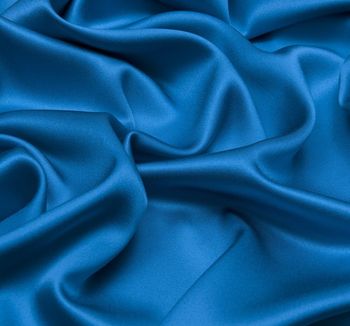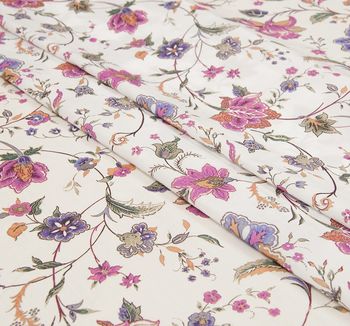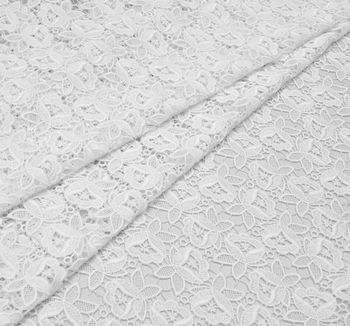Silk is a timelessly trendy natural fabric woven from the cocoons of silk worms. The world’s most famous fashion brands regularly apply it for various men’s and women’s outfits earning the admiration of the audience.
Fabric by the Yard
Fabric by the yard is the first necessary calculation that a dressmaker or tailor conducts when getting prepared for the sewing process. It is easy to assess the importance of this factor as generally it strongly defines the final price on making of this or that garment.
What are the factors that define the quantity of a fabric by the yard?
Clothing design. Whether your clothing will feature decorative elements (patch pockets, shoulder straps, folds, complexly designed collars, ruches and other finishing details) or an intricate, chequered, or striped pattern, the fabric consumption increases up to some 11.81-15.74 in.
Fabric design. If your fabric features a pattern, certain texture or the piles are long and are combed in one direction, its consumption can increase by at least half a meter in order to combine the desired pattern with the cut.
Your shapes. Obviously, the curvier your figure is, the more fabrics you need, and vice versa.
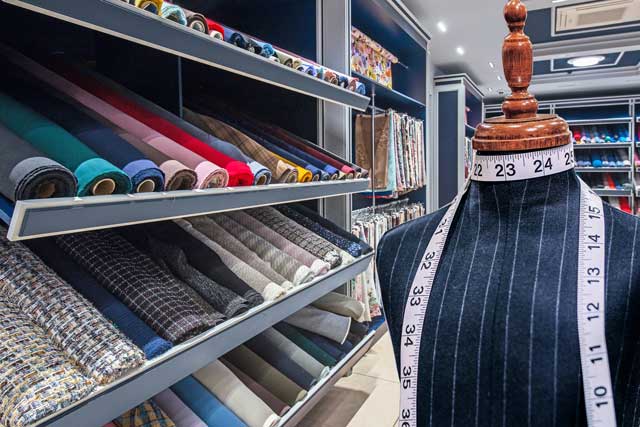
How to Calculate a Fabric Length?
To answer this question, you need to know your body size and the measured length of your desired piece of clothing. If you know these metrics, the two tables below will help you define the exact amount of fabric you need.
| type of clothing | fabric consumption | |
|---|---|---|
| main fabric (57 in width) | lining fabric (55.11 in width) | |
| straight skirt | one product length + 7.87 in | product length |
| flared skirt | two product lengths + 7.87 in | two product lengths |
| pants | one product length + 11.81 in | 15.74-19.68 in |
| blouse | one product length + sleeve length + 15.74 in | - |
| straight dress | one product length + sleeve length + 15.74 in | one product length |
| flared dress | two product lengths + sleeve length + 15.74 in | two product lengths |
| vest | one product length + 11.81 in | one product length |
| jacket | one product length + sleeve length + 15.74 in | one product length + sleeve length |
| straight coat | two product lengths + sleeve length | two product lengths |
| flared coat | two product lengths + sleeve length + 19.68 in | two product lengths + sleeve length |
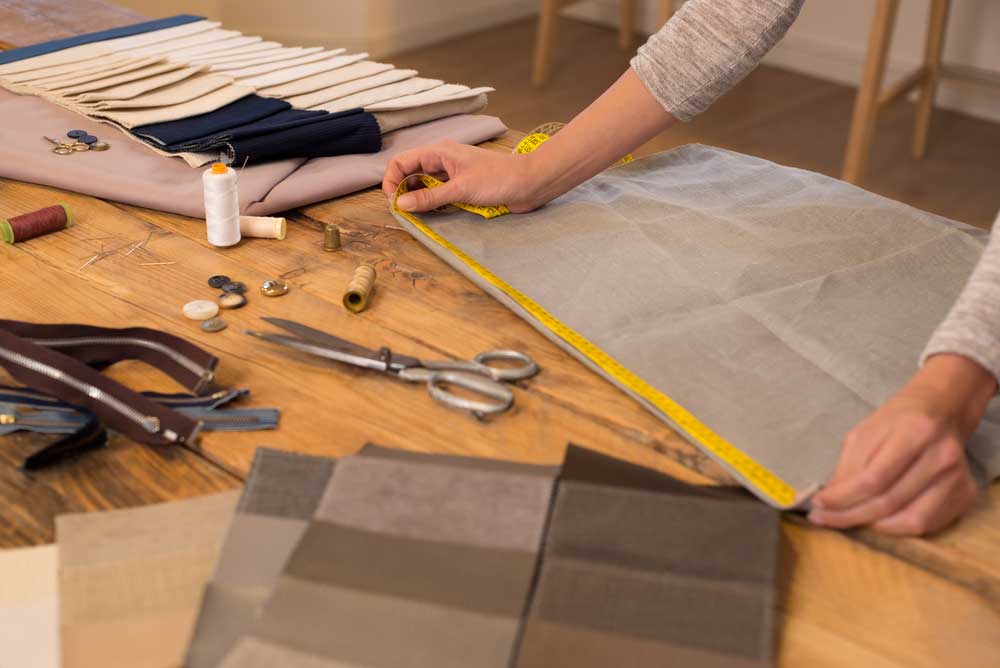
| type of clothing | fabric consumption | |
|---|---|---|
| main fabric (57 in width) | lining fabric (55.11 in width) | |
| straight skirt | one product length + 7.87 in | one product length |
| flared skirt | two product lengths + 7.87 in | two product lengths |
| pants | product length + 11.81 in | 19,68 in |
| blouse | two product lengths + sleeve length | - |
| straight dress | two product lengths + 11.81 in | two product lengths |
| flared dress | two product lengths + 11.81 in | two product lengths |
| vest | two product lengths | one product length |
| jacket | two product lengths + sleeve length + 11.8 in | one product length |
| straight coat | two product lengths + sleeve length + 15.7 in | two product lengths + 15.74 in |
| flared coat | two product lengths + sleeve length + 23.6 in | two product lengths + sleeve length + 7.87 in |
Here are some comments that need to be added to these types of clothing:
For a one-piece straight dress, you need the amount of fabric that meets the desired length plus the sleeve length, provided that the volume of thighs with the allowances for seams and free fit equals the width of the fabric. It is necessary to take into account the allowances for the processing of the shoulder seams and the bottom of the product. If the fabric is narrow (27.55-39.37 in), the dress requires two product lengths plus the length of the sleeve. Fabric width of 47.24 in makes it possible to cut the sleeves from the rests of the cut and the back of the dress. In this case, two dress lengths are enough. In both cases, some more fabric will be needed to cut out additional details: pockets, cuffs, a collar, belt, etc.
When determining the fabric consumption for a cut-off waistline dress, you can use the calculation for a one-piece dress, adding 3.15-3.93 in to the processing of slices at the waist.
For a straight double-seam skirt with a fabric width of 55.11-59.05 in, one length will be required plus an allowance for processing the upper and lower cuts (2.36-2.75 in) plus the width of the belt (3.93 in), provided that the hip volume is less than the width of the fabric. If the fabric is narrow, two skirt lengths will be required.
For a skirt with a circular one-sided fold, measure the girth of the hips, multiply it by three and compare the result with the width of the fabric: whether the fabric cut to two lengths of the skirt will be enough, or the third length will be needed too.
The half-circle skirt requires two skirt lengths plus two radiuses of the groove for the waist, plus 3.93 in.
For a circle skirt, you need four product lengths plus four radiuses of the waist, plus 3.93 in.
The amount of fabric per a blouse is determined in the same way as for a dress. With a cloth width of 35.43-43.30 in, you need two blouse lengths and one sleeve length.
The amount of fabric for pants:
- With a hip circumference 39.37-40.94 in, one length of the product plus 7.87-11.81 in is required for additional parts.
- With a hip circumference greater than 40.94 in, it takes 1.5 product lengths.
For example, with a pants length of 40.15 in, the cloth consumption will be 40.15 + 20.07 = 60.23 in (see the table 1).
6. Men’s jacket. Measure the jacket length, add the sleeve length and 5.90-7.87 in.
7. Women’s nightgown. With a fabric width of 35.43 in, 2.5 fabric lengths are needed.
Note, however, that in case of cotton or linen fabrics, a rule of thumb is to buy a material by the yard with a certain margin for shrinking. The thing is these fabrics are very likely to change their dimensions after you wash them before starting sewing.
The Calculation of Fabric Weight per Yard
Fabric weight is measured by the surface density metric. What does this term stand for?
The surface density is a physical quantity that equals to the ratio of a fabric weight to a surface area and is used to characterize the thickness of various materials, including fabrics. The surface density SI unit is kg/m 2 or g/m 2, so don't forget to convert yards and pounds into the international measurement system. Accordingly, the smaller the thread number and/or the thinner the thread, the less the fabric density is.
For a particular fabric cut, the relationship between its weight and the number of running metres of the cut is expressed by the following formula:
m = L× w × d,
Where
- m - the cut weight
- L - the cut length
- w - the cut width
- d - fabric surface density
If you know any of the three values, you can find the fourth by that formula.
Fabric by the Yard at Tissura
At Tissura, the prices for all fabrics are set per a running metre. However, on any product page, you can find the conversion rates to calculate the price in yards.
The reason Tissura uses the metric measurement system is in the company’s global targeting. Its established corporate mission is in spreading the beauty of luxury fabrics all over the world, so the measurement adjustments are set in order to reach the wider audience.
At Tissura, you can buy fabrics by the yard supplied by the leading European manufacturers, who partner with the world-renowned fashion houses. You shouldn’t be a deeply sophisticated sewing aficionado to recognize the following brands:
- Jakob Schlaepfer (Switzerland)
- Forster Rohner (Switzerland)
- Sophie Hallette (France)
- Riechers Marescot (France)
- Etro (Italy)
- Ermenegildo Zegna (Italy)
- Scabal (Belgium)
- Luigi Colombo (Italy).
To get the general impression of our fabric range, see the selection below. Click on the button underneath to enjoy the entire collection of Tissura fabrics.
Alpaca wool coating fabric, 18857 US$ by the yard (173 US$ per one running metre)
Camel wool coating fabric, 212.16 US$ by the yard (194 US$ per one running metre)
Loro Piana fabric, 227.47 US$ by the yard (208 US$ per one running metre)
How to stay cool on a hot summer day? Wear fabrics built for the heat. Cotton, linen, viscose, silk – there are dozens of summer-friendly materials you can choose for your wardrobe. The best fabric to opt for when the temperature rises should be breathable and comfortable.
The wedding dress is one of the most important clothing items a woman gets to choose in her lifetime. It can be made of silk or cotton, lace or tulle, be strewn with sequins or embroidered with beads.
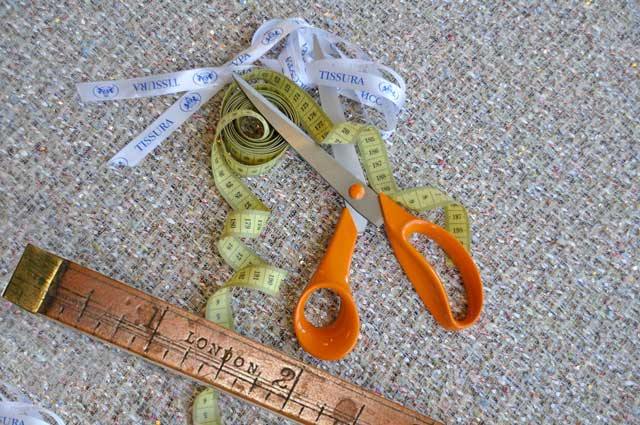
.jpg)
.jpg)
.jpg)
